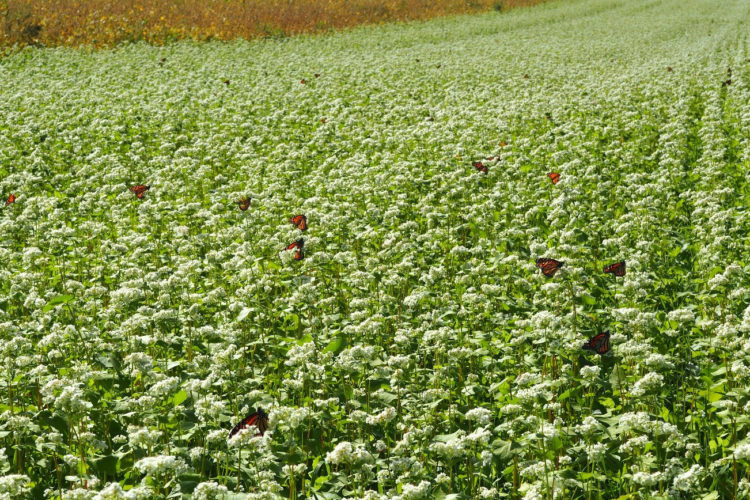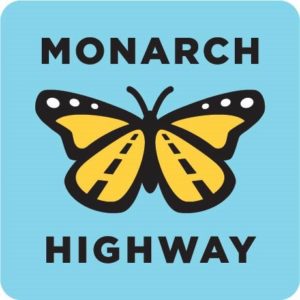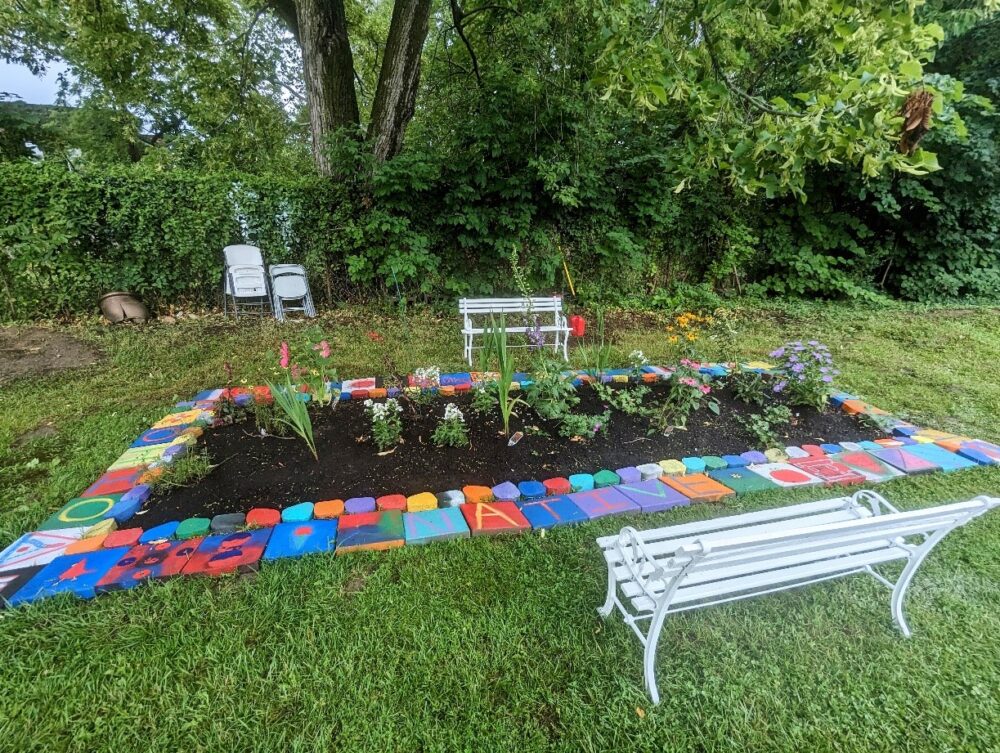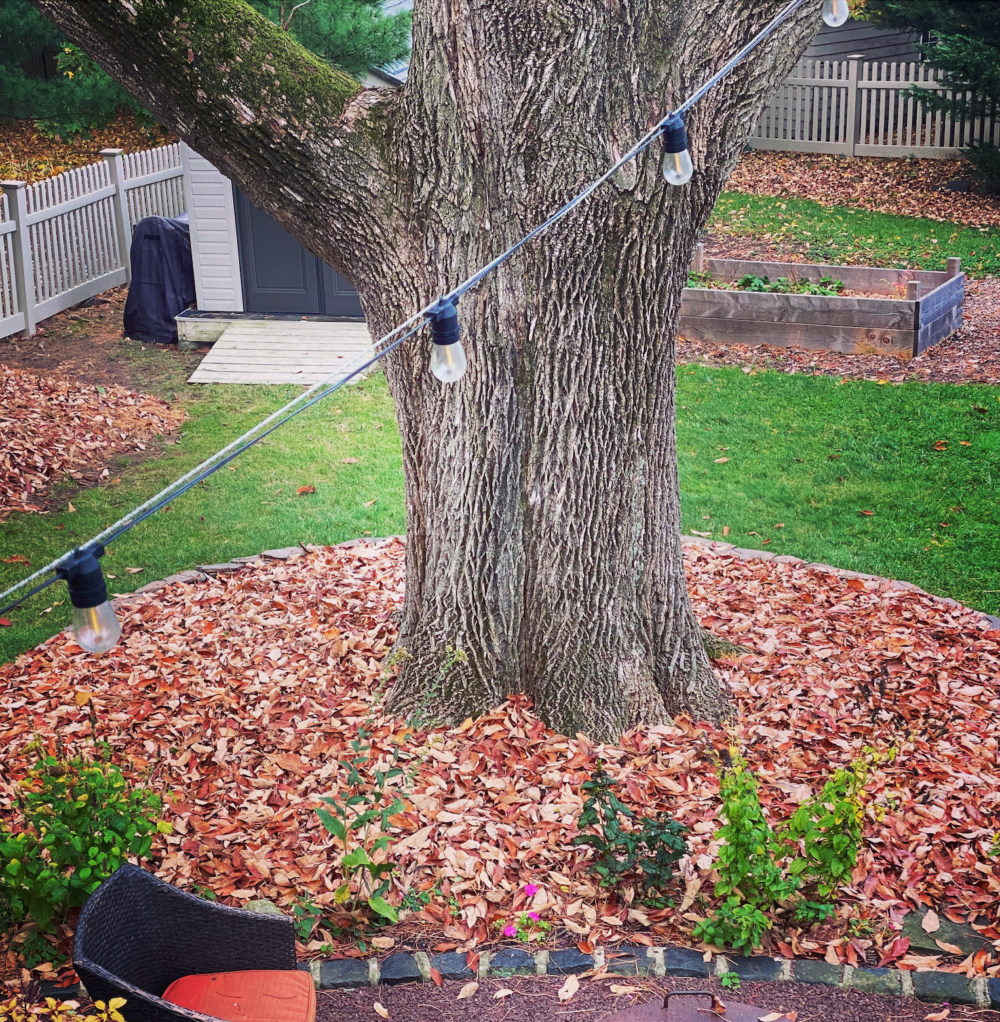We have much more to do and your continued support is needed now more than ever.
Interstate 35: Monarch Butterfly Highway

While the side of a busy interstate may not seem like an ideal place to rest, roadside vegetation can surprisingly provide important respite for wildlife on the move- including butterflies, bees and even migratory birds. With over 17 million acres of roadsides in the continental United States, some of which contain the only remnant prairie patches in an area, the habitat potential of roadsides is significant. Throughout the U.S., state departments of transportation are increasingly managing roadside vegetation to support habitat and food sources for wildlife by planting native plants, reducing mowing, and limiting the spraying of herbicides.
A Monarch Butterfly Highway from Texas to Minnesota
The National Wildlife Federation has been working with the state departments of transportation from Texas to Minnesota along interstate 35 to coordinate the Monarch Highway effort. The NWF-designed Monarch Highway logo was officially adopted and announced during pollinator week (June 19th-23) 2017.
 The state departments of transportation are promoting habitat in their rights of way by undertaking studies on the quality of habitat and presence of pollinators in their roadsides, updating signage, educating the public through rest area demonstration gardens, planting milkweed (for monarch breeding) and wildflowers (for feeding), and participating in their respective state pollinator conservation plans.
The state departments of transportation are promoting habitat in their rights of way by undertaking studies on the quality of habitat and presence of pollinators in their roadsides, updating signage, educating the public through rest area demonstration gardens, planting milkweed (for monarch breeding) and wildflowers (for feeding), and participating in their respective state pollinator conservation plans.
The I-35 as Monarch Highway initiative is an example of a recent coordinated effort across six states – Texas, Oklahoma, Kansas, Missouri, Iowa, Minnesota – to provide habitat for the rapidly declining monarch butterfly. This iconic species makes a multi-generational three thousand mile migration in the fall to Mexico and in the spring back up to Canada. Threatened with widespread habitat loss, increased use of pesticides, and climate change impacts, monarchs have suffered upwards of a 90% population decline in the last few decades.
Interstate 35 happens to fall within the central flyway of the monarch butterfly migration, as illustrated in the figure below, offering a prime opportunity for roadside monarch habitat creation and increased education. While not all of the roadsides along the 1,568 mile highway will be converted to pollinator habitat, the Monarch Butterfly Highway will also serve as an important educational tool to raise awareness of the status of the monarch butterfly and of the role of roadsides for habitat connectivity.
 In addition to our work on the I-35 corridor, NWF also works on monarch and pollinator issues throughout the country. Over 300 municipal leaders have taken NWF’s Mayors’ Monarch Pledge. NWF is a Steering Committee member of Monarch Joint Venture (MJV) and through MJV and The National Pollinator Garden Network we coordinate with many partners to enhance habitat in the central migratory flyway of the monarch, such as, Monarch Watch, Pollinator Partnership, Xerces Society, and the U.S. Fish and Wildlife Service. In addition, NWF co-founded the Million Pollinator Garden Challenge with many of the partners above, along with garden trade associations and voluntary civic organizations to reach a million gardens by 2018.
In addition to our work on the I-35 corridor, NWF also works on monarch and pollinator issues throughout the country. Over 300 municipal leaders have taken NWF’s Mayors’ Monarch Pledge. NWF is a Steering Committee member of Monarch Joint Venture (MJV) and through MJV and The National Pollinator Garden Network we coordinate with many partners to enhance habitat in the central migratory flyway of the monarch, such as, Monarch Watch, Pollinator Partnership, Xerces Society, and the U.S. Fish and Wildlife Service. In addition, NWF co-founded the Million Pollinator Garden Challenge with many of the partners above, along with garden trade associations and voluntary civic organizations to reach a million gardens by 2018.
For decades, NWF has increased habitat where people live, work, play, learn and worship across 210,000 habitat gardens through its Garden for Wildlife programs and engages 11,000 school through our Eco Schools USA program.
To help in the effort to continue to provide high quality habitat for migrating species, particularly the monarch butterfly, please support your department of transportation’s habitat efforts by complying with their roadside mowing and haying permits, limiting the spraying of herbicides near their habitat plantings, and visiting their habitat demonstration gardens. You can also take action by planting wildlife friendly habitat in your own backyard by accessing these resources. You can also help in the quest to tag and monitor the monarch population by participating in citizen science projects including those organized by Monarch Watch or Journey North.
Regardless of where you live, near the I-35 corridor or across the U.S., you can make a difference for monarch butterflies by gardening for wildlife and certifying your property with the National Wildlife Federation.
Help save monarch butterflies and all pollinators by taking the pollinator pledge.
Thank you for staying informed and doing your part for wildlife!




















